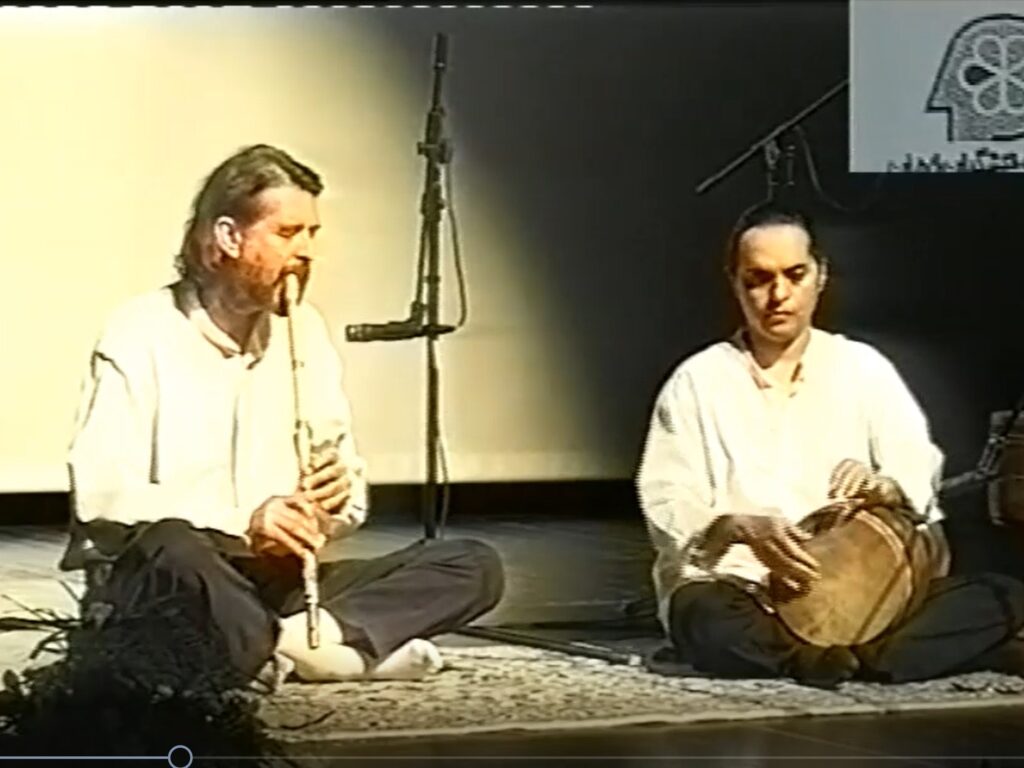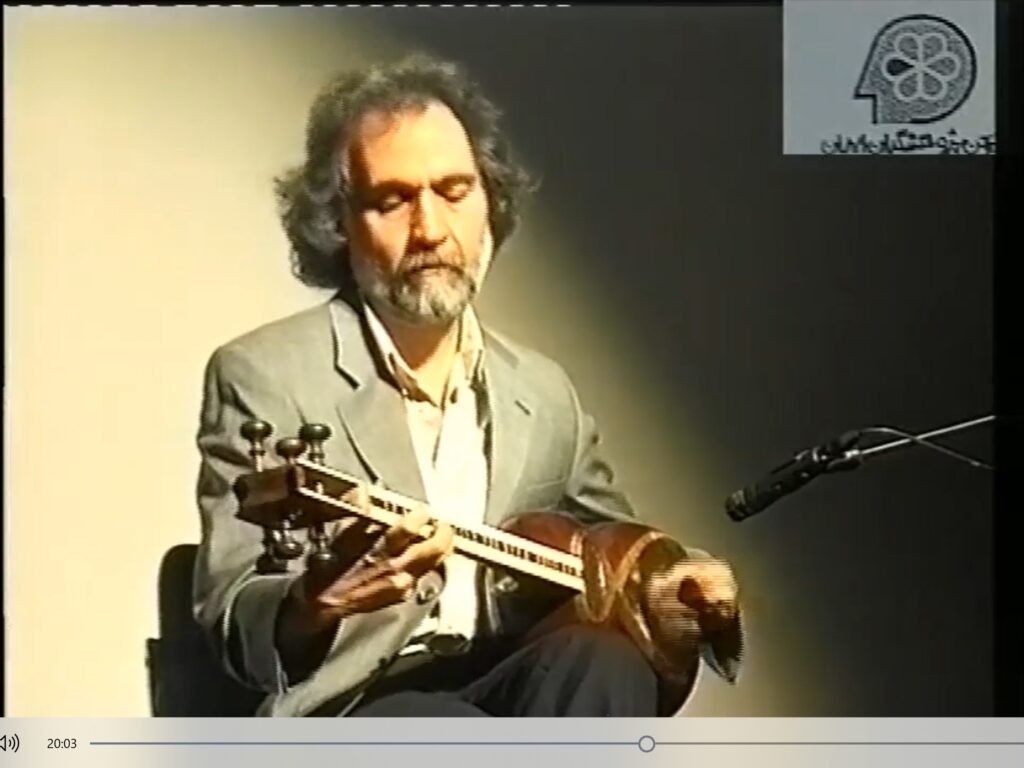’Iranian Music, past present and future’
Written by ACI in 27 November 20ACI dedicated its twenty seventh international conference to the study of ‘Iranian Music, past present and future’. This conference was convened jointly with the Music Institute of Cologne University with the participation of renowned musicians and experts worldwide.


23-25 September 1999
The Music Institute – University of Cologne
ACI dedicated its twenty seventh international conference to the study of ‘Iranian Music, past present and future’. This conference was convened jointly with the Music Institute of Cologne University with the participation of renowned musicians and experts worldwide.
The conference was opened with the welcoming words of Professor Dr Rüdiger Schumacher, the head of the Music Institute, who commented on the close ties between the Institute and the studies on Iranian Music.
Opening Remarks
- Dr Hossein Ladjevardi welcomed the audience on behalf of ACI. In his short opening speech, he reflected upon the famous Iranian musicians such as ‘Nakisa’ or ‘Barbod’ whose talents and abilities flourished under the Persian Kings. He went on to explain the aims and objectives of ACI in organising the Music conference. He hoped that with the aid of the experts the pleasure and joy derived from hearing music can be returned to the Iranian culture and replace the culture of mourning and lamentations governing it at present.
Day One – Panel One
- Professor Dr Nasser Kanani, one of the organisers of the conference was the first speaker to present his paper. With the aid of some very illuminating slides, he demonstrated the pre-Islamic history of Music in Iran and its importance in the every day lives of Iranians. Professor Dr Kanani completed his tour of the history of Iranian music on the second day by talking about post-Islamic music in Iran.
- Dr Thoms Ogger, an expert and lecturer on Iranian music based his interesting paper on Iranian music, past, present and future. Drawing on his first hand experiences in Iran during the last several years he introduced his views on modernity in Iranian music at present and where he sees it going.
- Professor Dr Hormoz Farhat, one of the most prominent authorities on Iranian music was the last speaker of the first session. His presence and paper on ‘Authenticity versus reform in traditional Persian music’ created a great deal of excitement. Amongst some very revealing points, in his opinion, traditional Persian music is noble yet familiar, private, and spiritual. He believes that it is to be heard in small and private gatherings as he did not believe it to have the same effect in a large informal concert hall. He believes it to be precious and one, which should be preserved.
Day One -Panel Two
- Dr Reza Torshizi, gave one of the most engaging talks of the conference as the first speaker of the second session on day one. He discussed rhythm in Iranian music. In his opinion, classical Persian poetry was the infrastructure upon which the rhythm of traditional Iranian music was based.
- Abdolhamid Eshragh, presented a very entertaining paper on ‘Dastgah’ in Iranian music. He had accessed some first recordings of instruments played by masters, which he shared with the audience. Amongst them a very beautiful impromptu dialogue between a canary and the ‘tar’ playing of one of the masters.
- Ghassem Talebzadeh, an accomplished and renowned violinist, discussed modernity in traditional Iranian music and suggested that by deriving inspiration from folk and traditional music, the music of the time must be created and that it must catch the essence of the era it is written and performed for.
Day Two – Panel Three
- Dr Jalal Akhbari, expert and musician, opened the first session of the second day by discussing the history of ancient Iranian music. In the second part of his paper in the afternoon session, he related the history to ‘Santoour’, its evolution, and teaching technique during the ages.
- Dr Hossein Omoumi, one of the most famous masters of ‘Ney’ presented a most charming and engaging papers on the history and teachings of the art of playing the ‘Ney’. He paid homage to his master, Hassan Kassaie as well as demonstrating a variety of methods for playing the ‘Ney’.
- Majid Khalaj, a young and accomplished musician whose expertise, knowledge and dedication in the art of Iranian drums have placed him highly amongst the masters of the instrument gave a most interesting talk punctuated by demonstrations of various rhythms and their language.
Day Three – Panel Four
- Professor Dr Rüdiger Schumacher, opened the afternoon session. He presented a most informative paper on the teachings in the Music Institute of Cologne University and its ties with Persian music. He dedicated his paper to Dr Massoudieh a colleague and close friend.
- Dr Eckart Wilkens, an expert on Iranian Music, discussed whether it was necessary to modernise traditional music for it to become global. He demonstrated his understanding of Iranian music a beautiful piece for the piano entitled ‘Sun, moon and the stars’. The audience received this very warmly.
- Dr Mohamad Assemi, enthralled the audience with his exciting and passionate delivery of traditional poems and their rhymes and rhythms which in his opinion had directly affected the music of their time.
The Concerts
- This particular conference was a new yet pleasant experience for the organisers because of the concerts, which were organised. The generosity of the experts and musicians who donated their time and performances for two evenings of traditional and modern music was received warmly by the audience. Both evenings were also recorded and broadcast into Iran by the BBC, Voice of America, Radio Free Europe, Radio France Internationale, Voice of Israel and Deutsche Welle.
- The first evening was dedicated to traditional Iranian music. Madjid Derakhshani and his beautiful tar playing opened the concert. Jalal Akhbari followed this with a piece on the ‘Santoor’ with the guest accompaniment of Reza Torshizi on the ‘Tonbak’. To close the evening, Hossein Omoumi and Madjid Khaladj received standing ovations for their enchanting performance of ‘Ney’ and ‘Tonbak’.
- The second evening was opened by a special piece for the flute written and performed by Dr Wilkens for the concert. This was followed by Guiti Khosravi accompanied on the piano by Dr Sara Hassanpour and later a by Gahssem Talebzadeh who had composed a piece as a surprise for the organisers. Cyrus Malakouti closed the first half of the evening with a classical piece performed on his specially modified and designed guitar.
- The second half saw a very entertaining piece by Maryam Akhundi and her group. This was followed by the beautiful folk singing of Parvin Cox accompanied by a student of the Tonbak ‘Nassim’. The evening came to its end with the beautiful performance of the ‘Bahar’ dance group with choreography by Bahrampour.
In celebration of the life and works of Iraj Janatie Attaie
- The final evening was dedicated to Iraj Janati-Attaie. In his honour, ACI had invited his friends and colleagues as well as two of the most famous Iranian popular artists ‘Dariush’ and ‘Ebi’. His poems were instrumental in their phenomenal success both before and after the Islamic Revolution.
- ACI believes that the successes and achievements of individuals must be honoured while they are still alive. Not only rewarding, but this will also allow them to carry on stronger than ever before and encourage the young generation to follow their example.
Thanks and gratitude
ACI would like to thank Professor Dr Kanani, Dr Mahmoud Khoshnam and, Dr Mehdi Rosefid, head of ACI Germany for their valued support and contribution. ACI extends its special thanks and gratitude to Professor Dr Rüdiger Schumacher at the University of Cologne’s the Music Institute whose vision and support made the conference possible.